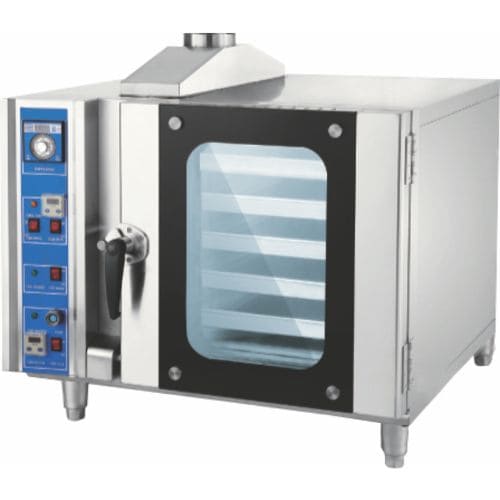Everything to know about Convection Oven (Gas)

To begin, realize that "convection" is a location on someone's oven, not the oven itself, and that it is primarily influenced by a switch or a press and hold near the other controls. When everything is turned on, you're cooking food with convection and conduction; when it's turned off, it's just an oven that typically bakes.
What happens when you turn on the convection setting? Your oven continues to heat usually, but a fan and exhaust system are activated. These knock and draw hot air through the oven and then around your food, respectively. This means that the air straightforwardly around your food stays at a very consistent temperature, allowing it to cook more speedily and smoothly. The exhaust pipe also draws extra water out of the oven, making food crisper and browner.
What ExactlyIs a Convention Oven?
A convection oven uses a fan and discharge system to circulate hot air throughout, making it perfect for multi-rack cooking. Convection ovens, like conventional ovens, can be gas or light and come in various models with varying features.
CONVECTION OVENS' BENEFITS:
- Circulating air aids in the even cooking of dishes on multiple racks.
- Less dish rotation between racks
- Browning and crisping are enhanced.
- Rapid preheating
- It is recommended for cooking a wide range of dishes such as meats, vegetables, casseroles, and cookies.
- Circulating air inside convection ovens helps food prepare more evenly across oven racks, resulting in recipes that are as simple to prepare as they are delicious.
How to Bake with the Convection Setting
Decrease the heat by 25 degrees Fahrenheit:
Because convection ovens are so efficient at heating and cooking, you don't need as high a temperature to achieve the same results. A basic rule of thumb is to set the oven by around 25°F lower than the recipe's recommended temperature.
Toward the end of cooking, check the food frequently:
Because of this efficiency, your types of food will prefer to cook a little faster than usual. Check on your food half the way through the recommended cooking time to see how quickly it appears to be cooking, and then more frequently near the end.
